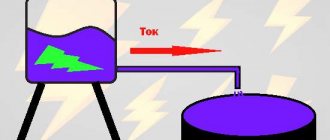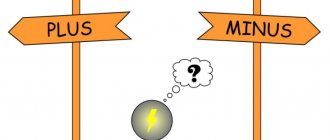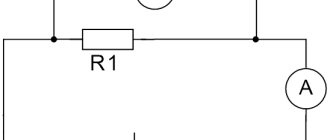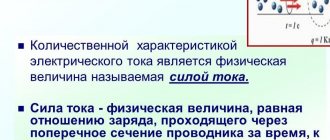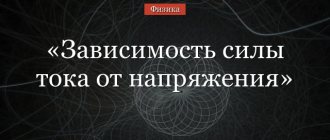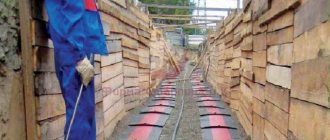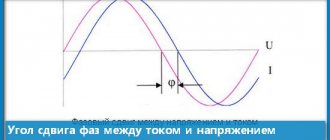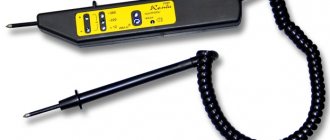Atomic structure
I think you all know that absolutely all substances consist of small grains - atoms. In turn, an atom consists of a nucleus and electrons. In some substances there can be a lot of electrons, but in others there can be only one (hydrogen atom).
Read more about the structure of the atom.
Let's play association. Let the nucleus be the shepherd and the electrons be the sheep.
There are billions of these shepherds in substances, and each shepherd has his own sheep. In some substances there is one sheep per shepherd, and in some substances there are even more than two hundred sheep! For example, hydrogen has only one electron, while metals have many electrons.
If you've ever herded cows, goats or sheep, then you're probably aware that the further away the cattle are from the shepherd, the more mess they can make, since the shepherd doesn't have time to look after all the sheep. Some sheep manage to escape from the herd, run to the arable land or gardens and feast on various delicacies there.
Electric Energy
Most of the electricity we use comes in the form of alternating current from the electrical grid. It is created by generators that work according to Faraday's law of induction, due to which a changing magnetic field can induce an electric current in a conductor.
Generators have rotating coils of wire that pass through magnetic fields as they rotate. As the coils rotate, they open and close relative to the magnetic field and create an electric current that changes direction with each turn. The current passes through a full cycle back and forth 60 times per second.
Generators can be powered by steam turbines heated by coal, natural gas, oil or a nuclear reactor. From the generator, the current passes through a series of transformers, where its voltage increases. The diameter of the wires determines the amount and intensity of current they can carry without overheating and losing energy, and the voltage is limited only by how well the lines are insulated from ground.
Free electrons
That is, these sheep that are farthest from the shepherd are freer than those that are next to the shepherd. Let's just call them free. By analogy with electricity – free electrons. We will call such “sheep” in metals free electrons , which are located farthest from the shepherd (nucleus). The further an electron is from the nucleus, the less dependent it is on the nucleus. That is, it breaks away from the core and becomes absolutely free.
Transcript
1 I option Test on the topic “Direct electric current”. 1. For a current to arise in a conductor, it is necessary that... A - a force acts on its free charges in a certain direction. B - forces acted on its free charges. B - a constant force acted on its free charges. 2. A force acts on charges at each point of a conductor if it... A - there are electric dipoles. B - there is an electric field. 3. A circuit is assembled from a current source, an ammeter and a lamp. Will the ammeter reading change if another lamp of the same type is connected in series? A - It will not change, since with a series connection the current strength in all parts of the circuit is the same. B - It will increase because the circuit resistance has decreased. B - Will decrease because the circuit resistance has decreased. D - Will decrease as the circuit resistance has increased. 4. In a circuit of a current source, an ammeter and a lamp, another one with the same resistance is connected parallel to the lamp. Will this change the ammeter reading? A - Will double in size. B - The reading will not change. B - Will decrease by half. 5. What is the total resistance of the electrical circuit if the resistance of each resistor is 4 ohms? A - 10 Ohm, B - 16 Ohm,
2 V - 12 Ohm, G Ohm 6. What letter indicates current strength and in what units is it measured? A - I; volt (V). B - U; ampere (A). B - I; ampere (A). 7. What device can measure the current strength of a section of an electrical circuit and how is this device connected to the electrical circuit? A - Ammeter, in series. B - Ammeter, parallel. B - Voltmeter, in series. 8. Under the influence of what forces do electric charges move inside a current source? A - Under the influence of electrical forces. B - Under the influence of non-electric forces. 9. Express the value of the current 2 ka in microamperes A 0, ka B mka V mka 10. Conducting materials are used for the manufacture of A - housings of household appliances B - wires C - armatures of electrical machines D - contact clamps
3 Option II Test on the topic “Direct electric current”. 1. What letter denotes potential difference (voltage) and in what units is it measured? A - U; volt (V). B - I; volt (V). B - R; om (Ohm). 2. What device can be used to measure the potential difference in an electrical circuit and how is this device connected to the electrical circuit? A - Ammeter, in series. B - Voltmeter, in parallel. B - Voltmeter, in series. 3. As the temperature of a metal conductor increases, its resistance to electric current... A increases. B - decreases. B - does not change. 4. Under the influence of what forces do electric charges move in an external electrical circuit? A - Under the influence of external forces. B - Under the influence of magnetic forces. B - Under the influence of electric field forces.
4 5. How to practically determine the EMF of a current source? A - Using a voltmeter connected to the poles of the current source with the external circuit open. B - Using a voltmeter connected in parallel with a resistor in the external circuit. B - Using a voltmeter and an ammeter connected to a resistor in an external circuit. 6. Select the definition of direct current: A is a current that does not change in magnitude over time B is a current that always flows in an electrical circuit C is a current that does not change in magnitude or direction over time 7. Select the definition of parallel connection resistors: A is a connection in which the same voltage is applied to all resistors B is a connection in which the same voltage is applied to all resistors C is a connection in which the resistors are connected on top of each other 8. What is equal to the current flowing through resistor R1, if its resistance is R1 = 100 Ohms, the resistance of resistor R2 = 500 Ohms, if the current flowing through resistor R2 is I2 = 0.1 A. A 0.5 A B- 0, 1 A V 0.02 A 9. Two series-connected resistors were connected to a network with a voltage of U = 24 V. In this case, the current became equal to I 1 = 0.6 A.
5 When the resistors were connected in parallel, the total current became equal to I 2 = 3.2 A. Determine the resistance of the resistors. 10. If the network voltage is 220 V, the lamp resistance is 20 ohms, then the current in the circuit is ... A A B - 11 A B A
Electricity
As I already said, there are billions of these shepherds with sheep in substances. Consequently, there are even more sheep that are very far from the shepherd. And these same sheep walk away from the shepherds and can bolt at any moment.
Now imagine this situation. Somewhere not far from these shepherds there is a large collective farm field with fresh cabbage. And as soon as the free sheep noticed this (“why don’t we RUN and eat cabbage?”), the whole crowd immediately moved to “conquer” this field!
The result is a stream of sheep moving in one direction.
All the same processes occur in metal. As soon as all the free electrons begin to move in one direction, an electric current will arise:
Electric current is the ordered movement of charged particles, most often electrons, in one direction. By analogy with hydraulics, electrons are water molecules. Electric current is the flow of water. I think this will be enough for now. Words alone won’t fill you up, so let’s draw a picture to please your eyes:
At the moment, the hose is lying somewhere in the garden and there is water left in it. The hose is not connected anywhere, that is, the water molecules in the hose are in a stationary state.
By analogy with electronics, the copper wiring lies on the table and is not connected anywhere.
But then evening came. You need to water the tomatoes and cucumbers, otherwise by winter you will be left without a snack. As soon as we open the tap, the water in the hose begins to move:
Now the final question: why did water run through the hose when we opened the faucet? Pressure was created ... the molecules to the left began to press on the molecules to the right and movement began. But who pushed the molecules that pushed the molecules? This is either a pump or water in a water tower under the influence of the gravitational force of the Earth.
In electronics, electrons are pushed by the so-called emf. In any electrical circuit there is that same “pump” that pushes electrons through the wiring and radio elements. It can be located in the circuit itself, or connected to the circuit from the outside. As soon as the electrons begin to move in the wiring in one direction, then we can already say that an electric current .
Electrical hazards and other hazardous properties of electricity and safety precautions
Electric current heats the conductor through which it flows. That's why:
1.
If a household electrical network is overloaded, the insulation gradually chars and crumbles. There is a possibility of a short circuit, which is very dangerous.
2.
Electric current flowing through wires and household appliances encounters resistance, so it “chooses” the path with the least resistance.
3.
If a short circuit occurs, the current increases sharply. This generates a large amount of heat that can melt the metal.
4.
A short circuit can also occur due to moisture. If a fire occurs in the case of a short circuit, then in the case of exposure to moisture on electrical appliances, it is the person who suffers first.
5.
Electrical shock is very dangerous and can be fatal. When electric current flows through the human body, tissue resistance decreases sharply. Processes of tissue heating, cell destruction, and death of nerve endings occur in the body.
How to protect yourself from electric shock
To protect yourself from exposure to electric current, use means of protection against electric shock: work in rubber gloves, use a rubber mat, discharge rods, grounding devices for equipment, workplaces. Automatic switches with thermal protection and current protection are also a good means of protection against electric shock that can save human life. When I am not sure that there is no danger of electric shock, when performing simple operations in electrical panels or equipment units, I usually work with one hand and put the other hand in my pocket. This eliminates the possibility of electric shock along the hand-to-hand path in case of accidental contact with the shield body or other massive grounded objects.
To extinguish a fire that occurs on electrical equipment, only powder or carbon dioxide fire extinguishers are used. Powder extinguishers are better, but after covering the equipment with dust from a fire extinguisher, it is not always possible to restore this equipment.
Electric circuit and its schematic representation
Definition
An electrical circuit is a collection of devices connected in a specific way that provide a path for electric current to flow.
Basic elements of an electrical circuit:
- Current source (generator, galvanic cell, battery, accumulator).
- Current consumers (lamps, heating elements and other electrical appliances).
- Conductors are parts of a circuit that have a sufficient supply of free electrons that can move under the influence of an external electric field. Conductors connect current sources and consumers into a single circuit.
- A key (switch, switch) for closing and opening a circuit.
The electrical circuit may also contain:
- resistor - an element of an electrical circuit that has some resistance;
- rheostat - a device for adjusting the current and voltage in an electrical circuit by obtaining the required resistance value;
- capacitor - a device capable of accumulating electrical charge and transferring it to other elements of the circuit;
- measuring instruments - devices designed to measure the parameters of an electrical circuit.
Definition
An electrical diagram is a graphic representation of an electrical circuit in which real elements are presented in the form of symbols.
Symbols of some elements of the electrical circuit
The simplest electrical circuit contains a current source and consumer, conductors, and a key. It can be shown schematically like this:
